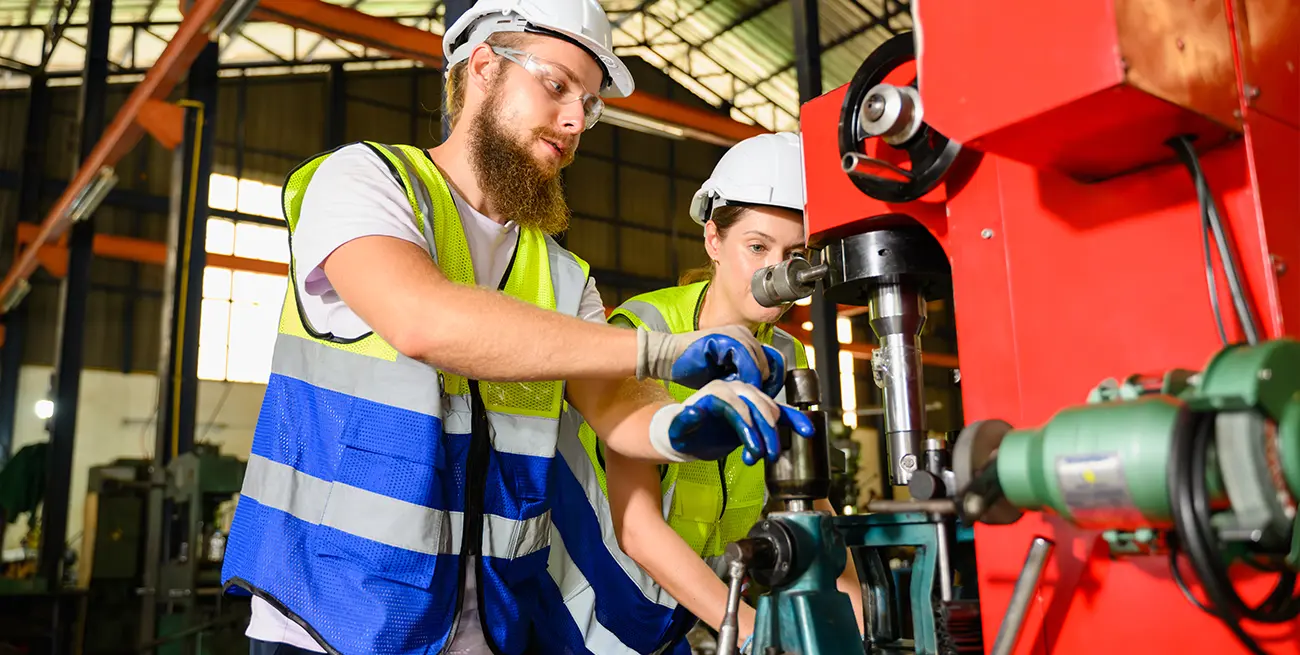Best Practices for Teaching New Employees Tool Safety

Training new employees in tool safety isn’t just about protecting them—it’s about safeguarding the entire team, the tools themselves, and the productivity of your operation. While everyone’s work environment and tools vary, the approach to instilling safety habits remains consistent. Below are practical, actionable methods to ensure that new hires learn the right way from day one.
Start with the Right Mindset
Effective tool safety begins with fostering the right attitude. Make it clear to new employees that tool safety isn’t optional or secondary. Emphasize that proper use and maintenance aren’t just policies—they’re what keeps everyone going home in one piece. When safety is presented as non-negotiable, it sets the tone for everything that follows.
Pair Them with an Experienced Mentor
Relying solely on manuals or videos can’t replace hands-on learning. Assigning a mentor to each new hire ensures they receive guidance directly from someone who knows the tools inside and out. The mentor’s role is to:
- Demonstrate correct handling and maintenance.
- Share real-world scenarios to highlight safety risks.
- Provide immediate feedback to correct mistakes.
This personal connection not only accelerates the learning process but also reinforces the seriousness of safety protocols.
Use Demonstrations Over Lectures
Watching tools in action is far more engaging than listening to someone list rules. Live demonstrations allow new employees to see proper techniques, common pitfalls, and the direct results of following—or ignoring—safety procedures.
When conducting demonstrations:
- Choose an experienced operator who can explain as they work.
- Include both standard procedures and examples of what not to do.
- Let employees ask questions throughout the process.
Hands-on experience should follow closely after these demonstrations to solidify what was taught.
Make Safety Training Interactive
Safety lessons should never feel like a chore. Interactive training sessions can include:
- Role-playing scenarios: Practice responding to potential hazards.
- Tool-specific drills: Focus on the safe handling of one tool at a time.
- Quiz-style challenges: Test knowledge of safety rules in a fun, competitive format.
When employees actively engage with the material, they retain more information and build confidence in their skills.
Reinforce with Visual Cues
Workspaces should serve as ongoing reminders of the safety principles you’ve taught. Use clear, concise signage near tools and workstations to highlight essential precautions. For instance:
- Post reminders about protective gear, like gloves or goggles.
- Use diagrams to illustrate the proper way to hold or store tools.
- Place warning signs in areas prone to specific hazards.
Visual cues ensure that even in high-pressure situations, employees have safety reminders at their fingertips.
Practice Safe Tool Storage
One often-overlooked aspect of tool safety is storage. Teaching employees to put tools away properly prevents accidents and extends tool life. Create a designated storage area that:
- Uses labeled compartments for easy identification.
- Keeps sharp or heavy tools in secure positions.
- Ensures frequently used tools are easily accessible without unnecessary reaching or bending.
Employees should learn to check for proper storage as part of their daily routine.
Encourage Questions Early and Often
Some new employees hesitate to ask questions out of fear of looking inexperienced. Encourage questions at every stage of training, and frame curiosity as a strength. When employees feel comfortable seeking clarification, they’re less likely to make avoidable mistakes.
Create an environment where no question is too basic, and ensure trainers are approachable and patient.
Conduct Regular Drills
Even the best training sessions fade with time. Conducting regular safety drills refreshes employees’ knowledge and keeps safety protocols top of mind. Drills should include:
- Emergency shutoff procedures for powered tools.
- Simulations of common tool mishaps.
- Review sessions on proper use of safety equipment.
Use these opportunities to identify areas where employees need additional guidance.
Emphasize Maintenance Skills
Tool safety isn’t just about how tools are used—it’s also about how they’re cared for. Teach new employees to:
- Inspect tools for wear or damage before each use.
- Sharpen blades and replace dull or broken parts promptly.
- Clean tools after use to prevent residue buildup.
When employees understand that maintenance directly impacts safety, they’re more likely to adopt good habits.
Lead by Example
All the training in the world won’t stick if employees see veterans cutting corners. Supervisors and experienced workers should model the behaviors they expect from others. Whether it’s wearing protective equipment, using tools correctly, or maintaining a tidy workspace, actions speak louder than policies.
When new employees see safety taken seriously at every level, it reinforces their own commitment.
Turning Lessons into Habits
Teaching tool safety isn’t a one-and-done event. It’s an ongoing process that turns basic lessons into lasting habits. By creating a training environment that’s hands-on, interactive, and supportive, you help employees internalize safety as a way of working—not just a set of rules. And who knows? One day, they might become the mentors passing these lessons along.


